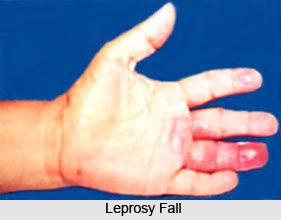 Dhanvantari in Agni Purana has said that diseases are usually grouped under the following heads, such as Organic, Mental, Extraneous and Functional. Diseases, such as Fever and Leprosy fall under the first head of ailments, while anger, envy, etc, are classed as mental derangements. Diseases which owe their origin to any extraneous cause, such as hurt, etc., are known as the Agantukas, while the functional disorders are such as may be best illustrated by thirst, or any other sort of Inflammatory Fever.
Dhanvantari in Agni Purana has said that diseases are usually grouped under the following heads, such as Organic, Mental, Extraneous and Functional. Diseases, such as Fever and Leprosy fall under the first head of ailments, while anger, envy, etc, are classed as mental derangements. Diseases which owe their origin to any extraneous cause, such as hurt, etc., are known as the Agantukas, while the functional disorders are such as may be best illustrated by thirst, or any other sort of Inflammatory Fever.
The holy Dhanvantari has also said his disciple Sushruta that by giving treacle, clarified butter, salt, bits of gold and cakes should be given to a Brahaman on a Sunday, for the prevention of all organic and extraneous diseases. Similarly by making over to a Brahaman, a vessel full of unguent on a Monday, a man is sure to enjoy immunity from all sorts of diseases. Vessels, full of oil, should be given to a Brahaman on a Saturday in the month of Ashvina.
It has been mentioned in this chapter that the giver should also provide a feast for the Brahamanas, composed of boiled rice and clarified butter, and bathe the phallic emblem of Lord Mahadeva, in a composition of water and clarified butter, whereby he would be free of all ailments, and enjoy a sound health to the last day of his life. Bunches of Durva grass, dipped in the composition known the Tri-Madhu, should be cast as oblations into the sacrificial fire, by reciting the Gayatri Mantra. The patient, after the period of his convalescence, should bathe under the auspices of the asterism under which he had contracted the disease, and offer oblations to the gods. A recitation of the psalm, known as the Vishnu Stotra, should be deemed as an efficient cure for all sorts of mental aberrations.
Dhanvantari in this chapter of Agni Purana has also discussed the three cardinal principles of human system, known as the Vata (wind), Pitta (bile) and Kapha (phlegm), and the seven component principles which enter into the making of the human frame. The serum contained in the food taken in by individuals is transformed into blood, out of which tissues of muscles or flesh are made.
It has been advised that a physician in attending to a patient, should take into consideration the nature of the country, the season during which the disease had been contracted, the strength, stamina and the peculiar temperament of the patient, as well as the nature of the disease he has been suffering from, and the virtues and potency of the remedial measures to be used in that particular case. The treatment should be commenced under the auspices of favourable asterisms, and days marked by violent planets and baneful stars should be carefully avoided.
Phlegm is accumulated in winter, reaches its climax and makes itself manifest in spring, and is subsided in the summer months. Wind is accumulated in summer, exhibits its peculiar symptoms mostly in the nights of the rainy season, and is subsided in autumn. Bile is accumulated during the rains produces its characteristics symptoms in the autumn.
Dhanvantari while giving an account of diseases has said that most of the diseases in human body are caused by over eating. The rule is that only two-thirds of the stomach should be filled and the rest should remain empty.
Agni Purana has narrated that the heart is located in the upper part of the trunk, and is supposed to be the seat of the mind. A man of windy temperament becomes garrulous with a thin, wry frame, and scanty hairs, and of regular appetite, such a man fancies himself as coursing through the wind in sleep. A man of bilious temperament becomes irritable, perspires copiously, is over fond of sweets, and sees flames of fire in dreams. The hairs of such a man become untimely tinged with grey. A man of phlegmatic disposition, is a man of regular build, with glossy hairs and clear complexion, and sees large sheets of clear water in sleep. At this context it has been said that men of different temperaments are again sub-divided into the three classes of Satvika, Rajasika and Tamasika, according to their individual propensities.
Towards the end of the chapter it has been said that a recitation of the hymn to Lord Vishnu, should be deemed a safe cure for all sorts of distempers.



















